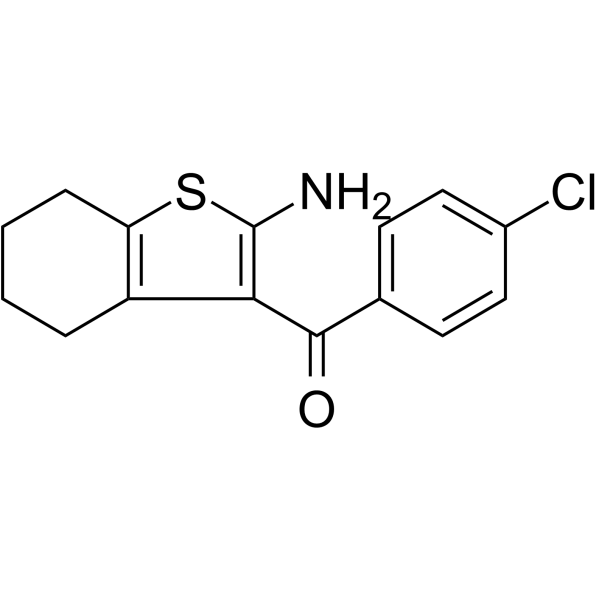
Adenosine A1 receptor activator T62
CAS No. 40312-34-3
Adenosine A1 receptor activator T62 ( —— )
产品货号. M26600 CAS No. 40312-34-3
腺苷 A1 受体激活剂 T62 是腺苷 A1 受体的变构增强剂,在急性疼痛动物模型中产生镇痛作用,并降低炎症和神经损伤疼痛模型中的超敏反应。
纯度: >98% (HPLC)
 COA
COA
 Datasheet
Datasheet
 HNMR
HNMR
 HPLC
HPLC
 MSDS
MSDS
 Handing Instructions
Handing Instructions
| 规格 | 价格/人民币 | 库存 | 数量 |
| 5MG | ¥2608 | 有现货 |


|
| 10MG | ¥3872 | 有现货 |


|
| 25MG | ¥6253 | 有现货 |


|
| 50MG | ¥8505 | 有现货 |


|
| 100MG | ¥11502 | 有现货 |


|
| 500MG | ¥22923 | 有现货 |


|
| 1G | 获取报价 | 有现货 |


|
生物学信息
-
产品名称Adenosine A1 receptor activator T62
-
注意事项本公司产品仅用于科研实验,不得用于人体或动物的临床与诊断
-
产品简述腺苷 A1 受体激活剂 T62 是腺苷 A1 受体的变构增强剂,在急性疼痛动物模型中产生镇痛作用,并降低炎症和神经损伤疼痛模型中的超敏反应。
-
产品描述Adenosine A1 receptor activator T62 is an allosteric enhancer of adenosine A1 receptor, and it produces antinociception in animal models of acute pain and also reduces hypersensitivity in models of inflammatory and nerve-injury pain[2][3].(In Vivo):Adenosine A1 receptor activator T62 (0.3-3 μg; intrathecal administration; male SpragueDawley rats) treatment produces a dose-dependent antihypersensitivity effect. However it has no effect on ambulation or activity level.
-
体外实验——
-
体内实验Adenosine A1 receptor activator T62 (0.3-3 μg; intrathecal administration; male SpragueDawley rats) treatment produces a dose-dependent antihypersensitivity effect, with no effect on ambulation or activity level. Animal Model:Male SpragueDawley rats (250 g) after paw incision surgery Dosage:0.3 μg, 0.5 μg, 1 μg, and 3 μg Administration:Intrathecal administration Result:Produced a dose-dependent antihypersensitivity effect, with no effect on ambulation or activity level. The ED40 (95% confidence interval) was 0.77 (0.63-0.91) μg.
-
同义词——
-
通路Apoptosis
-
靶点Adenosine Receptor
-
受体PDE4
-
研究领域——
-
适应症——
化学信息
-
CAS Number40312-34-3
-
分子量291.79
-
分子式C15H14ClNOS
-
纯度>98% (HPLC)
-
溶解度——
-
SMILESNc1sc2CCCCc2c1C(=O)c1ccc(Cl)cc1
-
化学全称——
运输与储存
-
储存条件(-20℃)
-
运输条件With Ice Pack
-
稳定性≥ 2 years
参考文献
1.Manuel Mata, et al. Piclamilast inhibits the pro-apoptotic and anti-proliferative responses of A549 cells exposed to H(2)O(2) via mechanisms involving AP-1 activation. Free Radic Res. 2012 May;46(5):690-9.



 021-51111890
021-51111890 购物车(0)
购物车(0)
 sales@molnova.cn
sales@molnova.cn











